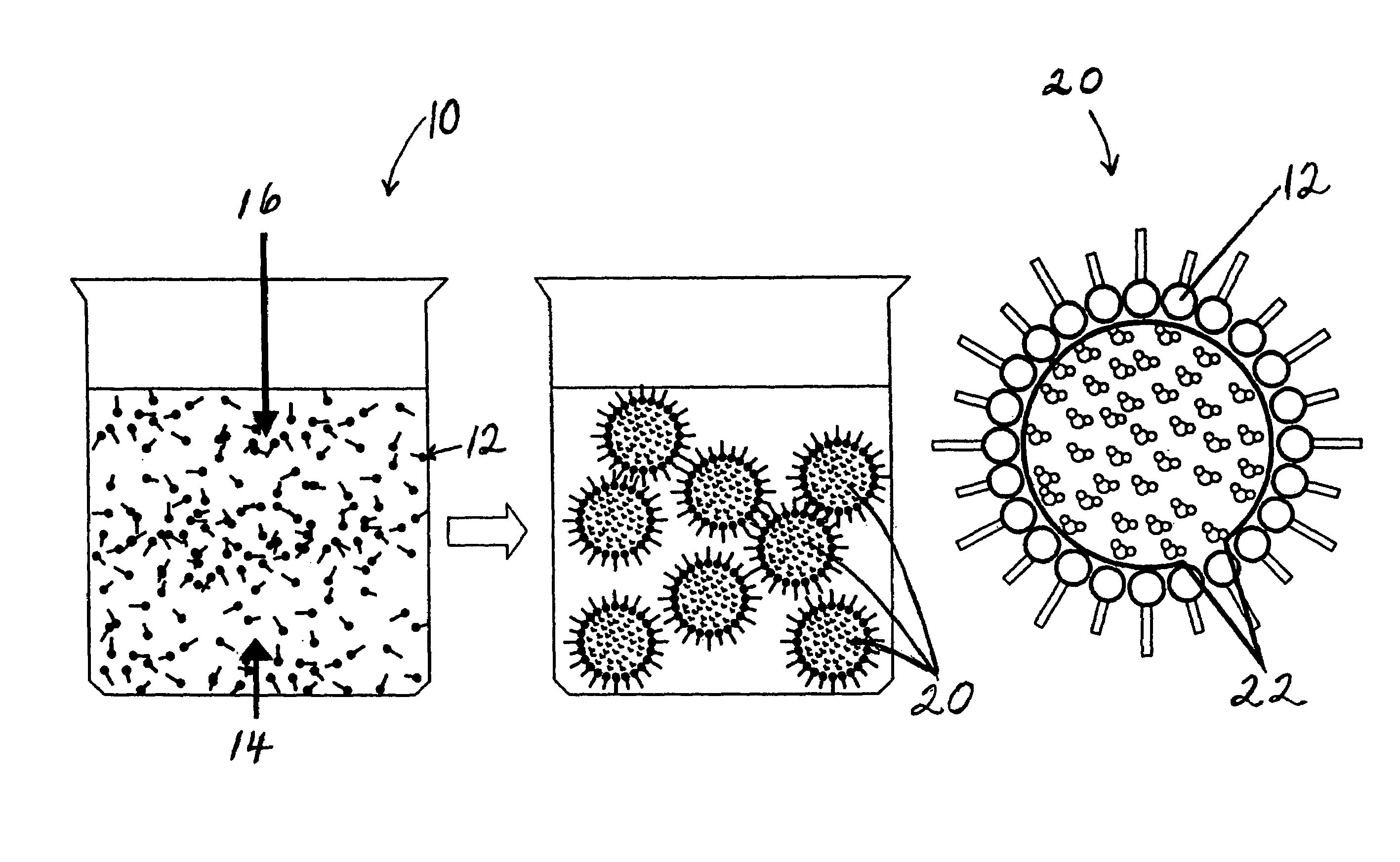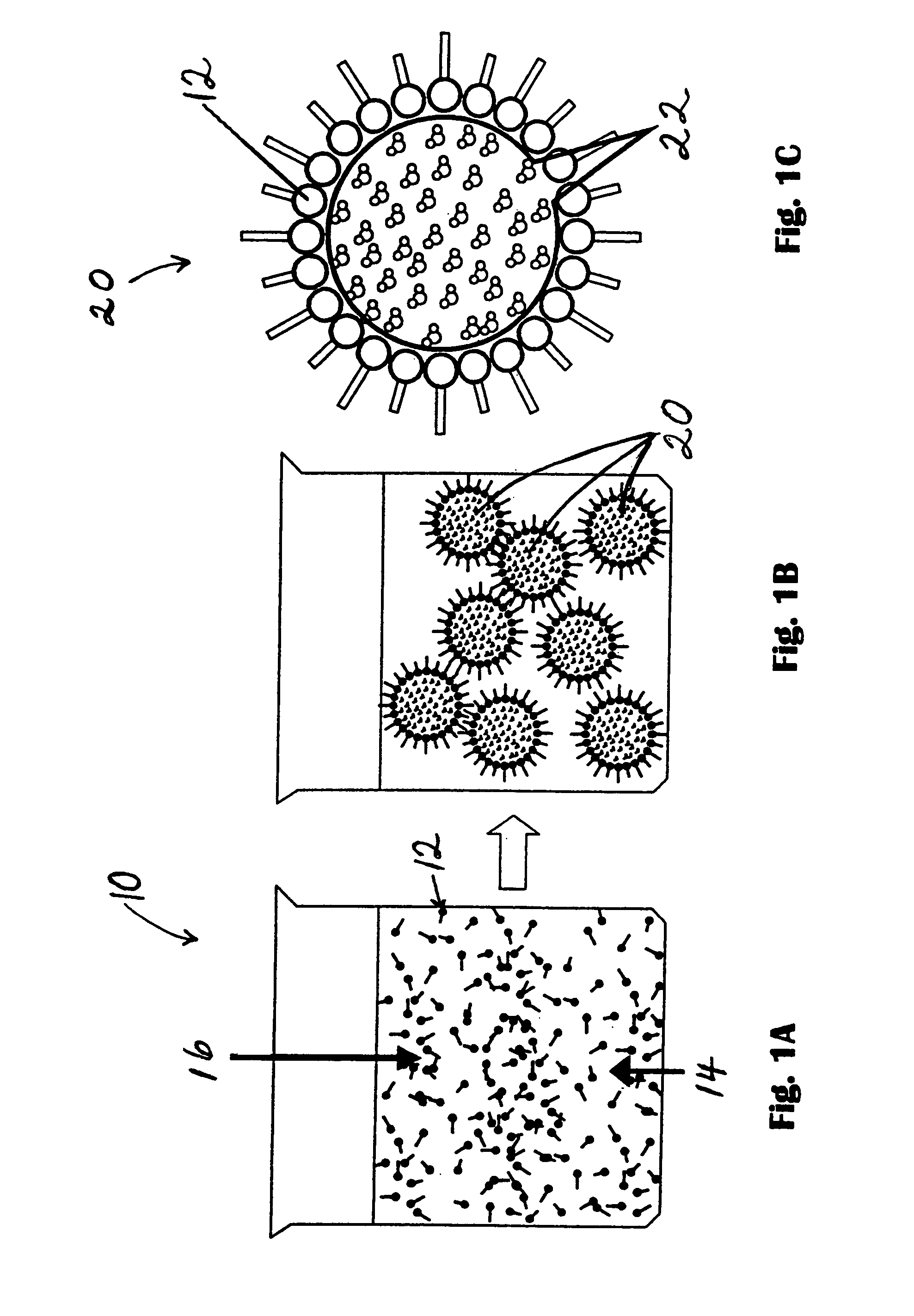Use of oxide nanoparticles in soot reduction
- Summary
- Abstract
- Description
- Claims
- Application Information
AI Technical Summary
Benefits of technology
Problems solved by technology
Method used
Image
Examples
Embodiment Construction
[0038]Before explaining the disclosed embodiments of the present invention in detail it is to be understood that the invention is not limited in its applications to the details of the particular arrangements shown since the invention is capable of other embodiments. Also, the terminology used herein is for the purpose of description and not of limitation. Acronyms used throughout the description of the present invention are defined as follows:[0039]AOT refers to sodium bis(2-ethylhexyl) sulfosuccinate, a surfactant supplied by Aldrich Chemical Company, Inc., Milwaukee, Wis.[0040][c] / [c]total refers to relative soot concentration and is expressed as a decimal fraction.[0041]Ce(NO)3 refers to cerium nitrate.[0042]H2O2 refers to hydrogen peroxide.[0043]HRTEM refers to high-resolution transmission electron microscopy, a technique for examining nano-sized ceria particles, its size, shape and structure.[0044]RM refers to reverse micelles, a microemulsion technique for synthesizing rare ea...
PUM
 Login to View More
Login to View More Abstract
Description
Claims
Application Information
 Login to View More
Login to View More - R&D
- Intellectual Property
- Life Sciences
- Materials
- Tech Scout
- Unparalleled Data Quality
- Higher Quality Content
- 60% Fewer Hallucinations
Browse by: Latest US Patents, China's latest patents, Technical Efficacy Thesaurus, Application Domain, Technology Topic, Popular Technical Reports.
© 2025 PatSnap. All rights reserved.Legal|Privacy policy|Modern Slavery Act Transparency Statement|Sitemap|About US| Contact US: help@patsnap.com



